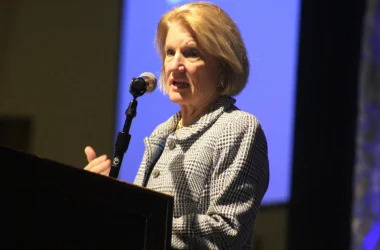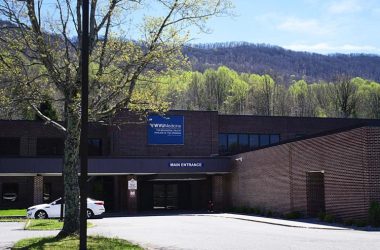By TAYLOR STUCK
The Herald-Dispatch
HUNTINGTON, W.Va. — The historic building rehabilitation tax credit increase approved by the Legislature last week won’t go into effect until Jan. 1, but Huntington Mayor Steve Williams said if the date was Nov. 1 he believes at least two developers in the Jewel City would be ready to apply.
Williams wouldn’t go into detail on what the two projects are, but he said the tax credit increase passed by the state Legislature during its special session shoved the projects to go.
“(The year) 2018 will be a breakout year because there are two projects waiting in line to go,” he said. “I can think of two major projects in downtown Huntington, and there is the potential for a third or fourth.”
House Bill 203 increased the historic rehabilitation tax credit for commercial income producing properties from 10 percent to 25 percent.
To qualify, the property must be listed on the historic register, whether individually or as part of a district, such as downtown Huntington. The property must also be commercial or income producing, such as a bed and breakfast, an apartment complex or other commercial property, said Jennifer Brennan, tax credit coordinator for the West Virginia Division of Culture and History. There is a separate tax credit for private residences.
Developers must also follow the federal Secretary of the Interior standards for rehabilitation, which includes maintaining the historic character of the structure.
The 25 percent credit brings West Virginia to parity with neighboring states. Ohio, Pennsylvania and Virginia have a 25 percent state historic tax credit; Maryland and Kentucky have a 20 percent tax credit.
Supporters hope the increase will encourage the rehabilitation of historic buildings and spur private investment, create jobs, and help rid the state of vacant and underutilized buildings. Studies have shown that the estimated return on the state’s investment is approximately 2 to 1. This means for every dollar of tax credit provided by the state, $2 of additional state taxes and revenue will be created through investments.
State Sen. Bob Plymale, D-Wayne, sponsored legislation to increase the credit during the regular session.
“I’m not necessarily in favor of many tax credits, to be honest,” Plymale said. “But it shows this tax credit, with such a quick return, is good. This is a revitalization of buildings that have been empty for a number of years and gives them new life.”
The process
Applying for the tax credit starts with the West Virginia Division of Culture and History. First, developers must determine the project qualifies. Then they submit plans, including before pictures and renderings of plans.
All of that is evaluated by Brennan’s office. Then once the work is finished, developers send pictures of the completed project to show they followed through with the original plan and maintained the historic character and followed the guidelines.
The office then recommends projects to be approved by the National Park Service. The state office does not have any control over what does or does not get approved.
Approved projects will receive the tax credit on a first-come, first-served basis, which is outlined in the new legislation.
Brennan said when an application is submitted, developers will receive a tax credit reservation. They will get the credit once the project is approved by the park service.
The first-come, first-served protocol is necessary because the new legislation caps the amount of money the West Virginia State Historic Preservation Office can give back. The cap is at $30 million annually.
Plymale said he cannot explain why there is a cap at all.
“If you read the report by Dr. Cal Kent (with Marshall University’s Center for Business and Economic Research) regarding analysis and comparison of tax credits, one of the major suggestions was do not have a cap,” Plymale said. “First off, the return on investment is 2 to 1, and it’s within three to four years you get that return. To me, a cap is not necessary because it will limit the amount of projects in the state.
“As transformative as it is for Huntington, it’s also transformative for places like Milton. The project they talked about at the old hospital – think about the impact that has for Milton. It is unbelievable. One of the first things we will need to do in regular session is review it.”
Plymale was referring to an announcement earlier this month that the Jeff and Patricia Hoops family plans to transform the vacant Morris Memorial Hospital in Milton into a 100-room hotel. The hospital, built in 1936, served as a polio hospital and then a nursing home until 2009 and has since been vacant, vandalized and deteriorating.
Williams said the cap is frustrating and called it a half-step.
“How strong our cities are is how strong the state is,” he said. “They need to decide if they are in or out.”
An amendment was offered in the House of Delegates by three delegates to up the cap to $50 million, but it did not pass.
According to Brennan, between 2014 and 2017, the office returned $30.46 million in tax credits to developers in the state. She expects the credit will increase participation in the program.
“We know of a few projects getting themselves together to submit applications,” Brennan said. “The goal is to increase the rehabilitation, so we hope that is the outcome. We know there is a lot of excitement. Especially in the first year we expect to see a good increase in activity, then we will see what happens after that.”
In February, a group of Huntington investors announced that they envisioned up to $50 million could be spent to upgrade up to 11 downtown structures and pump up to $20 million annually into the economy if their initiative to attract 500 retirees to the city succeeds as planned. They have founded a group called Retire Huntington, which has the goal of fueling the renovation of 425,000 square feet of space in multiple downtown buildings that would be eligible for tax credits because of their historic nature. Among the buildings they have identified are the Coal Exchange, Prichard, West Virginia Building and The Frederick, according to one of the developers, Bob Childers.
The partners said at the time of their announcement that they were looking to lawmakers in Charleston to give their plan a boost by passing legislation to increase historic tax credits.
“This is vital to developers,” partner John Hankins said at the time. “It is very expensive to remodel historic buildings, and it can cost double that of normal construction. I don’t think we could continue this plan without getting some relief.”
Williams said if Huntington’s projects miss out on the credit because of the cap, there will be “Hades to pay.”
“We could eat up (that cap) just in Huntington,” he said. “I’m being told by other cities we are probably 12 months to two years ahead of where other cities are because we’ve been so active in these last few years. In time, all things work together for good. This is showing everything we have been doing has set the foundation.”
The West Virginia State Historic Preservation Office is developing standards and procedures to educate and promote the program to the public. For more information relating to the historic tax credit program, contact Brennan at 304-558-0240.
Rehabilitation standards
Here are the Secretary of the Interior’s standards for rehabilitation of historic structures:
1. A property shall be used for its historic purpose or be placed in a new use that requires minimal change to the defining characteristics of the building and its site and environment.
2. The historic character of a property shall be retained and preserved. The removal of historic materials or alteration of features and spaces that characterize a property shall be avoided.
3. Each property shall be recognized as a physical record of its time, place and use. Changes that create a false sense of historical development, such as adding conjectural features or architectural elements from other buildings, shall not be undertaken.
4. Most properties change over time; those changes that have acquired historic significance in their own right shall be retained and preserved.
5. Distinctive features, finishes and construction techniques or examples of craftsmanship that characterize a historic property shall be preserved.
6. Deteriorated historic features shall be repaired rather than replaced. Where the severity of deterioration requires replacement of a distinctive feature, the new feature shall match the old in design, color, texture and other visual qualities and, where possible, materials. Replacement of missing features shall be substantiated by documentary, physical or pictorial evidence.
7. Chemical or physical treatments, such as sandblasting, that cause damage to historic materials shall not be used. The surface cleaning of structures, if appropriate, shall be undertaken using the gentlest means possible.
8. Significant archeological resources affected by a project shall be protected and preserved. If such resources must be disturbed, mitigation measures shall be undertaken.
9. New additions, exterior alterations or related new construction shall not destroy historic materials that characterize the property. The new work shall be differentiated from the old and shall be compatible with the massing, size, scale and architectural features to protect the historic integrity of the property and its environment.
10. New additions and adjacent or related new construction shall be undertaken in such a manner that if removed in the future, the essential form and integrity of the historic property and its environment would be unimpaired.
Follow reporter Taylor Stuck on Twitter and Facebook@TaylorStuckHD.
See more from The Herald-Dispatch




